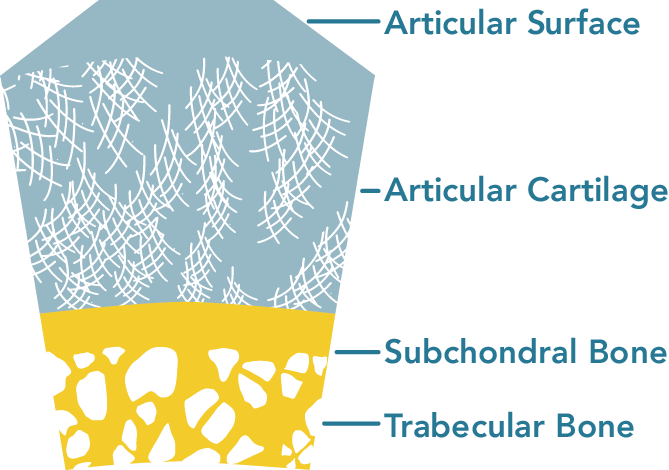 The patella, commonly referred to as the kneecap, is a small bone located where the femur and the tibia meet. This structure plays a vital role in how the knee bends and, therefore, in most motions that require moving the leg.
The patella, commonly referred to as the kneecap, is a small bone located where the femur and the tibia meet. This structure plays a vital role in how the knee bends and, therefore, in most motions that require moving the leg.
The patellofemoral joint is required to slide up when the knee extends and down when the knee flexes. The patella transmits the forces generated by the quadriceps across the knee to the tibia, acting as a link subjected to long-term load intake. Several studies have shown that as a result of the continuous stress to which this bone is exposed, it remodels itself over time adapting to the pressure it has to bear. The subchondral bone density distribution is a function of applied load, and the underlying trabecular bone is modeled to provide more structural support in areas subjected to higher stress.
To further understand the remodeling abilities of the patella, scientists from the University of Basel, Switzerland, investigated and represented the trabecular architecture below the subchondral bone plate, the layer of bone in contact with the articular surface.

Analyze software was used to evaluate computed tomography-osteoabsorptiometry (CT-OAM) datasets from 10 human patellae. The researchers were able to segment the subchondral bone plate, quantify its density distribution and project the resulting image onto a 3D reconstruction of the patella. Measurements of trabecular bone distribution and stability nearest the outer part of the bone correlated with the density distribution of the subchondral bone plate, which is a measure of load distribution.
Neither the density nor the mechanical strength given by the trabecular network is distributed homogeneously. Instead, they both exhibited distribution patterns which mirror long-term mechanical loadings in the articular surface. In fact, maximum trabecular parameters and subchondral bone plate density co-localized on the lateral side of the patella, the area subjected to largest contact stress. These findings regarding the correlation of density and mechanical strength are important factors in understanding how the patellofemoral joint functions in knee health and in injury.
The researchers measured bone volume fraction (BV/TV), bone surface density (BS/TV), trabecular number (Tb.N), trabecular separation (Tb.Sp), trabecular thickness (Tb.Th), structure model index (SMI) and degree of anisotropy (DA). These measurements and other cortical and trabecular bone measurements can be obtained from micro-CT data using the Bone Microarchitecture Analysis Add-On.
Find out more about the Bone Microarchitecture Add-On
Download the Bone Microarchitecture Analysis Users Manual
Tags: Orthopedic AnalyzeDirect
AnalyzeDirect